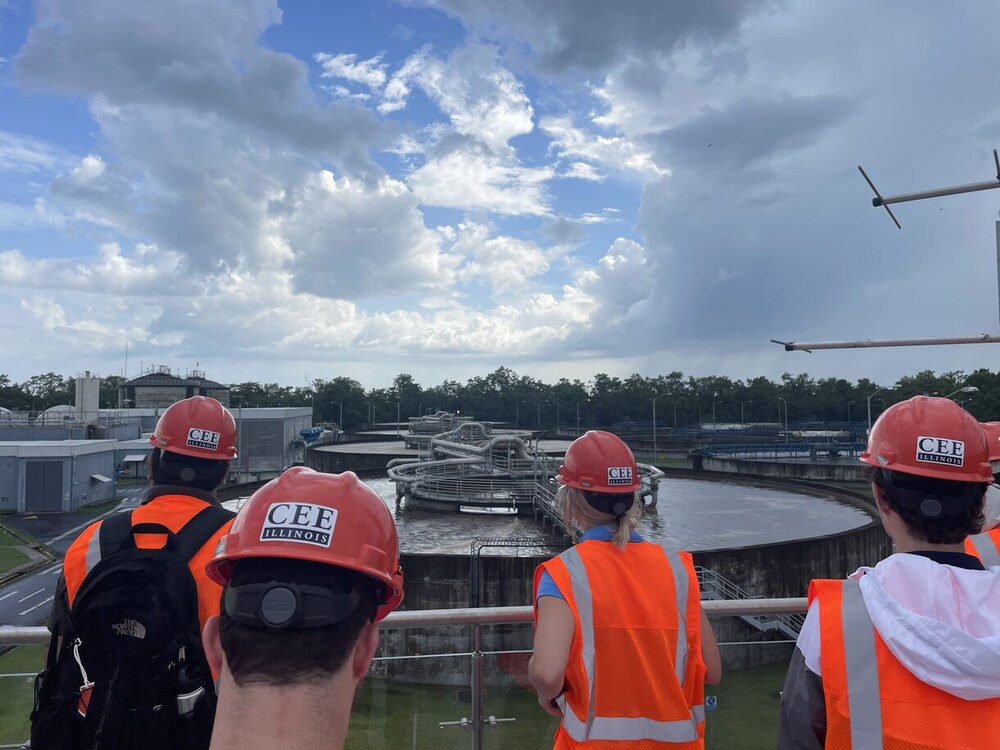January 10 was a rainy day for the GLCM crew, as the day started with a tour of the convention center and the airport expansion. Shortly after, the banana bus headed to see the new expansion and operations of the Juan Diaz Sanitation Plant in East Panama City. This plant has been built in two phases, referred to as modules 1 and 2.

Module 1 was completed in 2013, while Module 2 construction started in 2017 and was completed recently in 2021. Module 1 is comprised of 12 coagulation, flocculation, and sedimentation circular tank basins. Module 2 consists of increased capacity of disinfection through windy maze-like structures that allow chlorine to kill any harmful bacteria in the water. The site features an anaerobic digester of the sludge, which creates useful bio gas that can be converted to energy off site. The total project cost was about $242M, with international financing assistance. The plant has a French/Swiss design. It is the main plant in the Panama City sanitation district, connecting and supporting all of the smaller plants throughout the neighborhoods of the city. A third module is being considered to increase capacity, but studies are being done to decide if another location would be better suited for this third module.

Throughout the years, Panama had been underperforming in sewer sanitation, leading to the pollution of the bay just south of Panama City. This water is now basically unusable for recreation and has harmed the surrounding ecosystem. To restore the area, the city has undergone massive changes to improve sewer sanitation, mostly by building supporting sanitation plants, to filter human debris before allowing reentry into the ecosystem. This had been a growing problem ever since the city started to exponentially grow in the late 1970’s after economic development increased once control of the canal, and its huge revenue, was handed to the Panamanian government.

Also featured prominently on site is the Interactive Education Center of Environmental Studies and Sciences. Its purpose is to teach current and future students of the city how to sustainably interface with the world around them. In retrospect, this plant and education system should have been implemented much earlier, but the goal is to not allow such a problem to grow in the first place, hence the education of future generations on the mistakes of previous generations. Planning for the future of environmental sustainability is seen as even more important to keeping Panama safe and prosperous, and this plant and education center is just the beginning.

Blog by Danny Gentile
